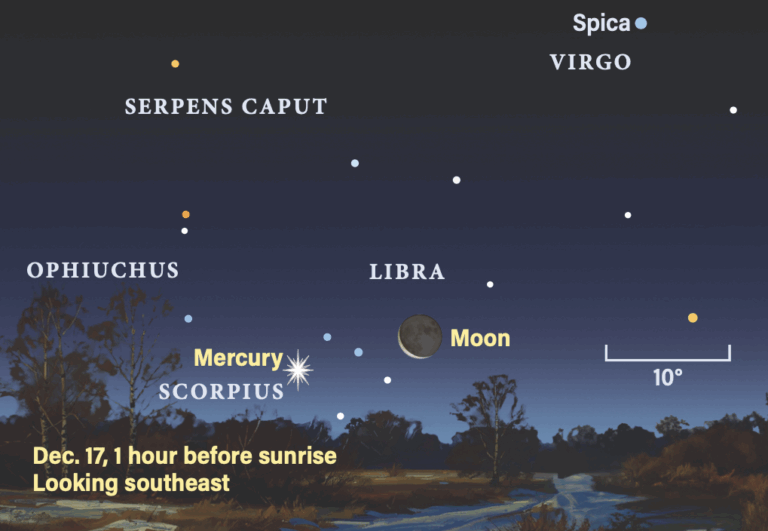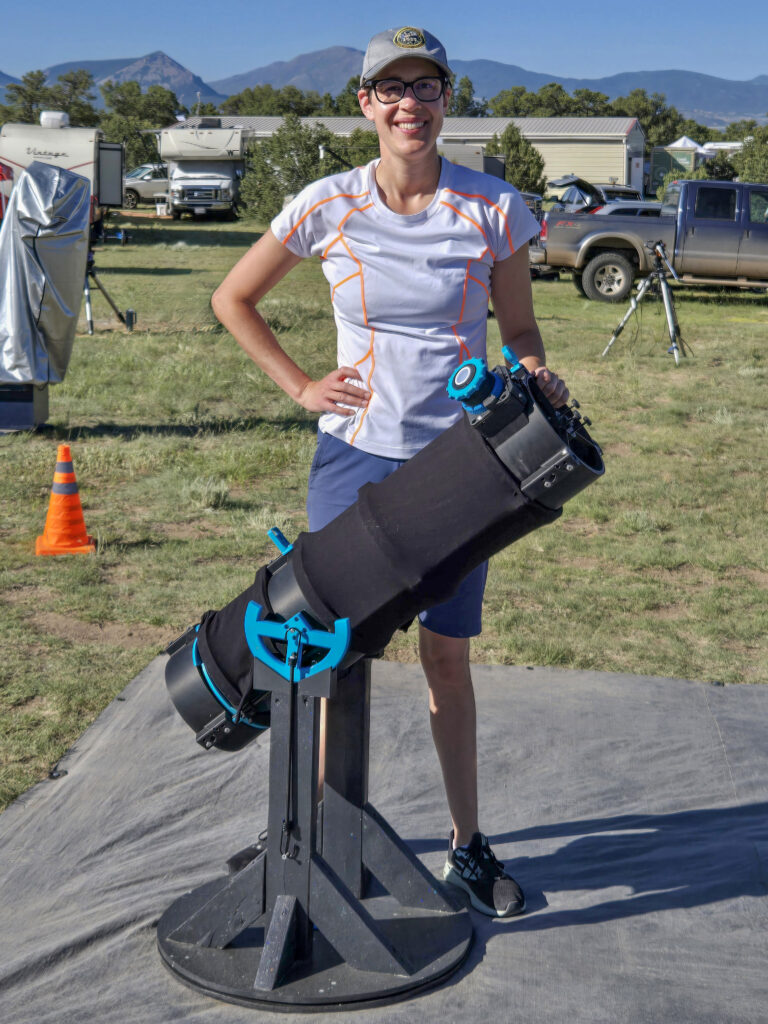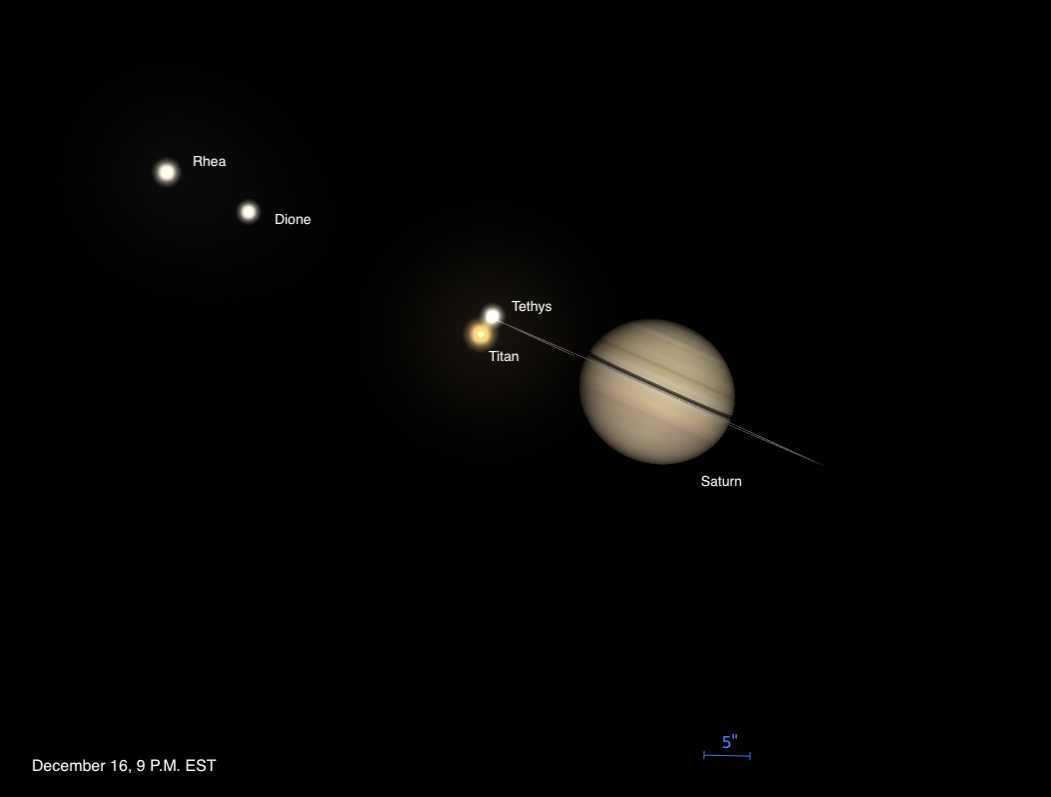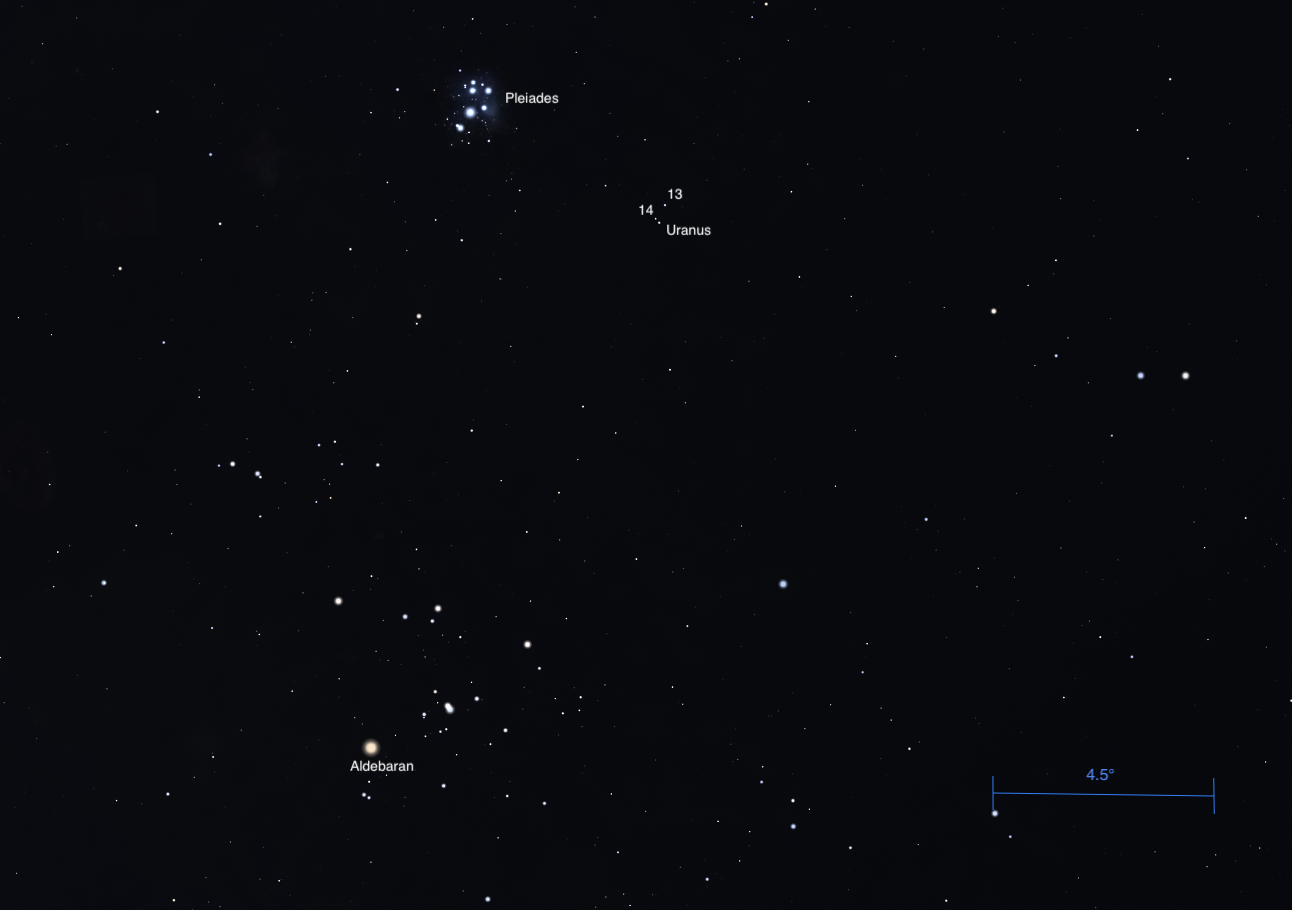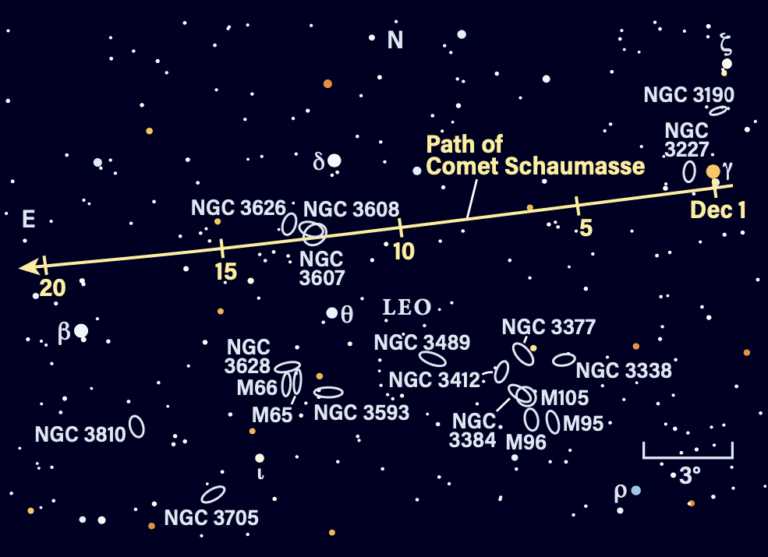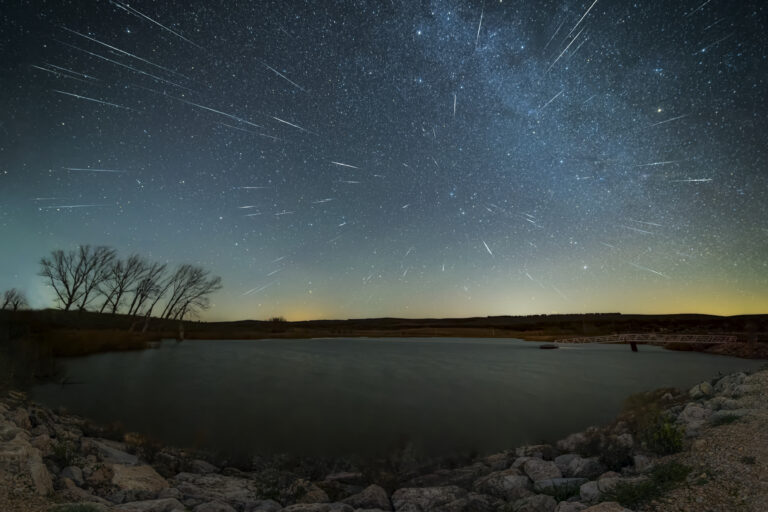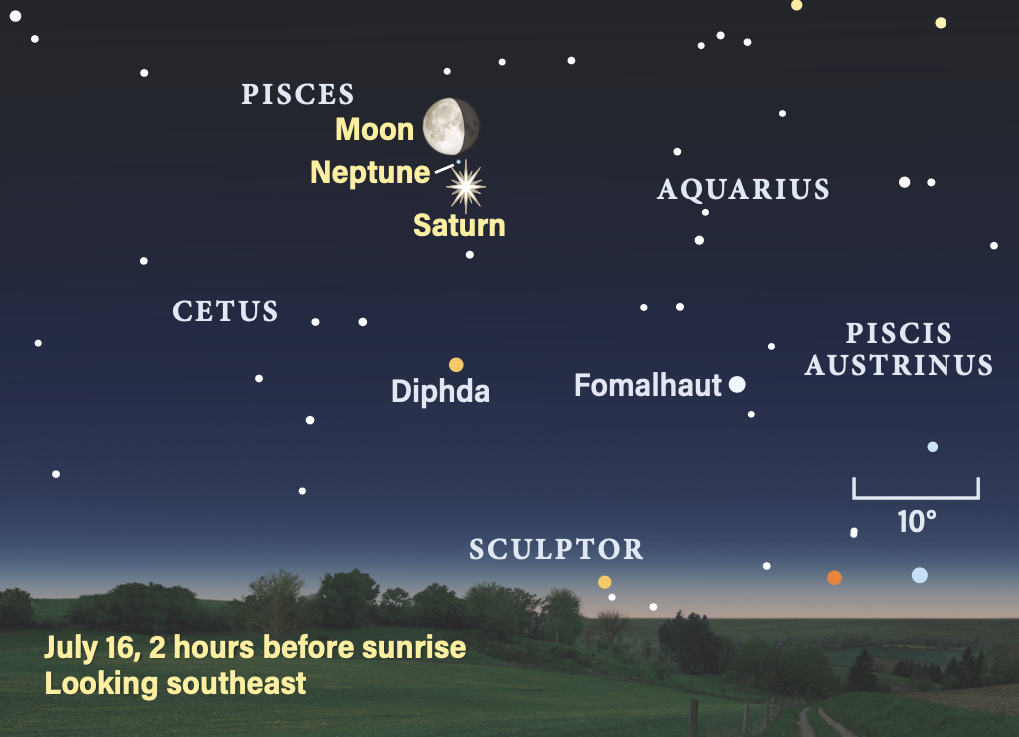
Key Takeaways:
- The waning Moon will pass near Neptune and Saturn in the pre-dawn sky.
- Saturn and Neptune will appear close together, though they are billions of miles apart.
- Neptune is too dim to see without binoculars or a telescope.
- Saturn's moon, Titan, is approaching Saturn.
The now-waning Moon is passing through Pisces in the early-morning sky. Our satellite slides 3° north of Neptune at 6 A.M. EDT, then passes 4° north of Saturn at 7 A.M. EDT.
It’s a lovely view for early risers, who can catch the scene in the few hours before dawn. Two hours before sunrise, the trio is some 40° high in the southeast. The Moon lies just to the upper left of magnitude 0.9 Saturn, with Neptune between the two. The most distant planet in the solar system is too faint to see with the naked eye, but binoculars or any telescope will pick up its magnitude 7.7 glow, just 1° north of Saturn. Both are visible in the same field of view as the planets appear to “line up” on the sky from Earth, despite the fact that they are nearly 1.9 billion miles (3.1 billion kilometers) apart.
The Moon’s light may make viewing Neptune more challenging, but shift our satellite out of your field of view and look closely amid the stars for a “flatter” star that looks disklike, with a grayish-blue hue. That’s the planet, which spans about 2” on the sky.
Over at Saturn, a telescope will show that the bright moon Titan has closed in a bit since earlier in the week. It now stands just over 2’ east of the planet and will continue nearing the ringed world — its shadow will transit early Friday morning.
Sunrise: 5:45 A.M.
Sunset: 8:27 P.M.
Moonrise: 11:43 P.M.
Moonset:11:59 A.M.
Moon Phase: Waning gibbous (65%)
*Times for sunrise, sunset, moonrise, and moonset are given in local time from 40° N 90° W. The Moon’s illumination is given at 12 P.M. local time from the same location.
For a look ahead at more upcoming sky events, check out our full Sky This Week column.


